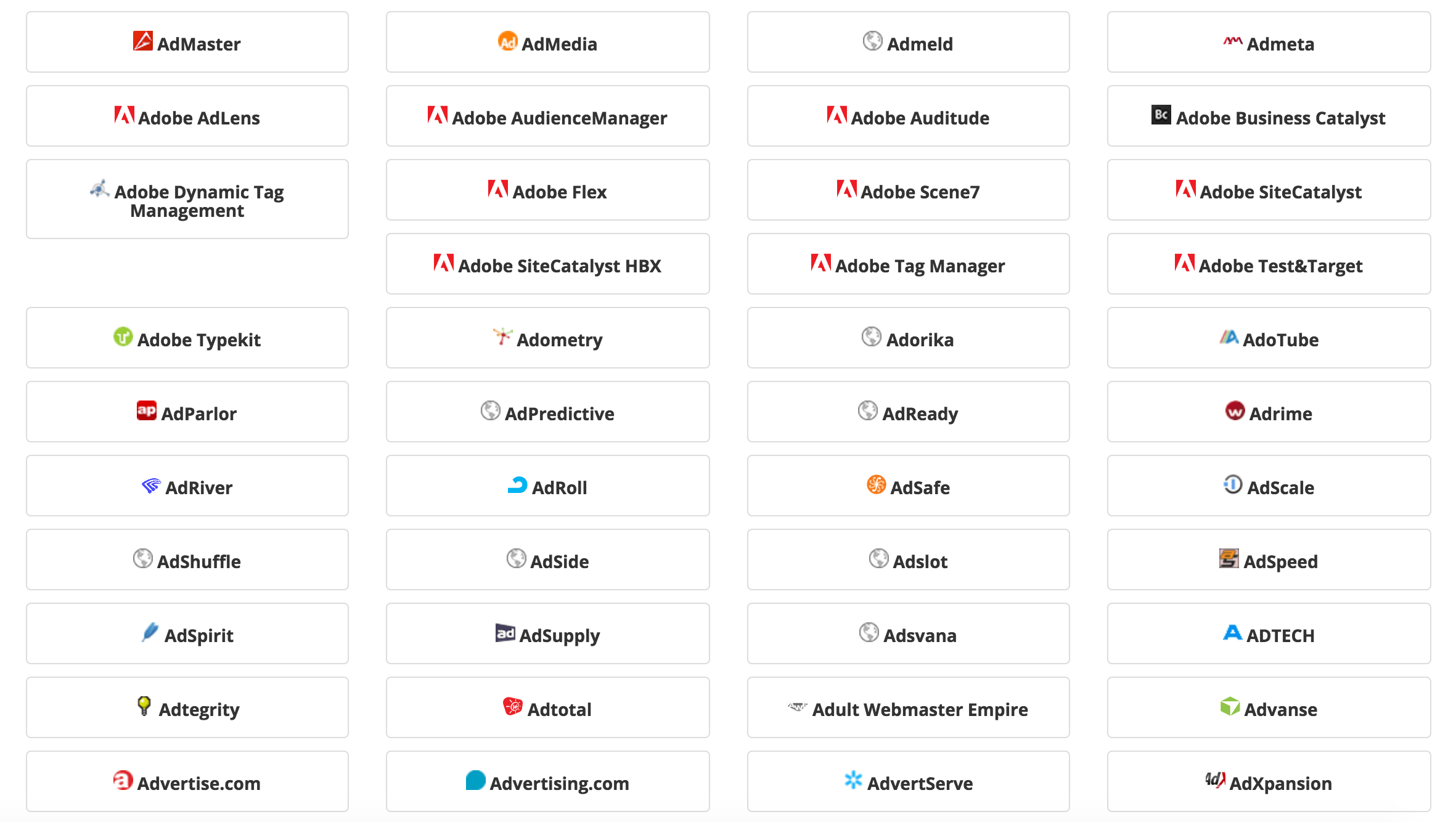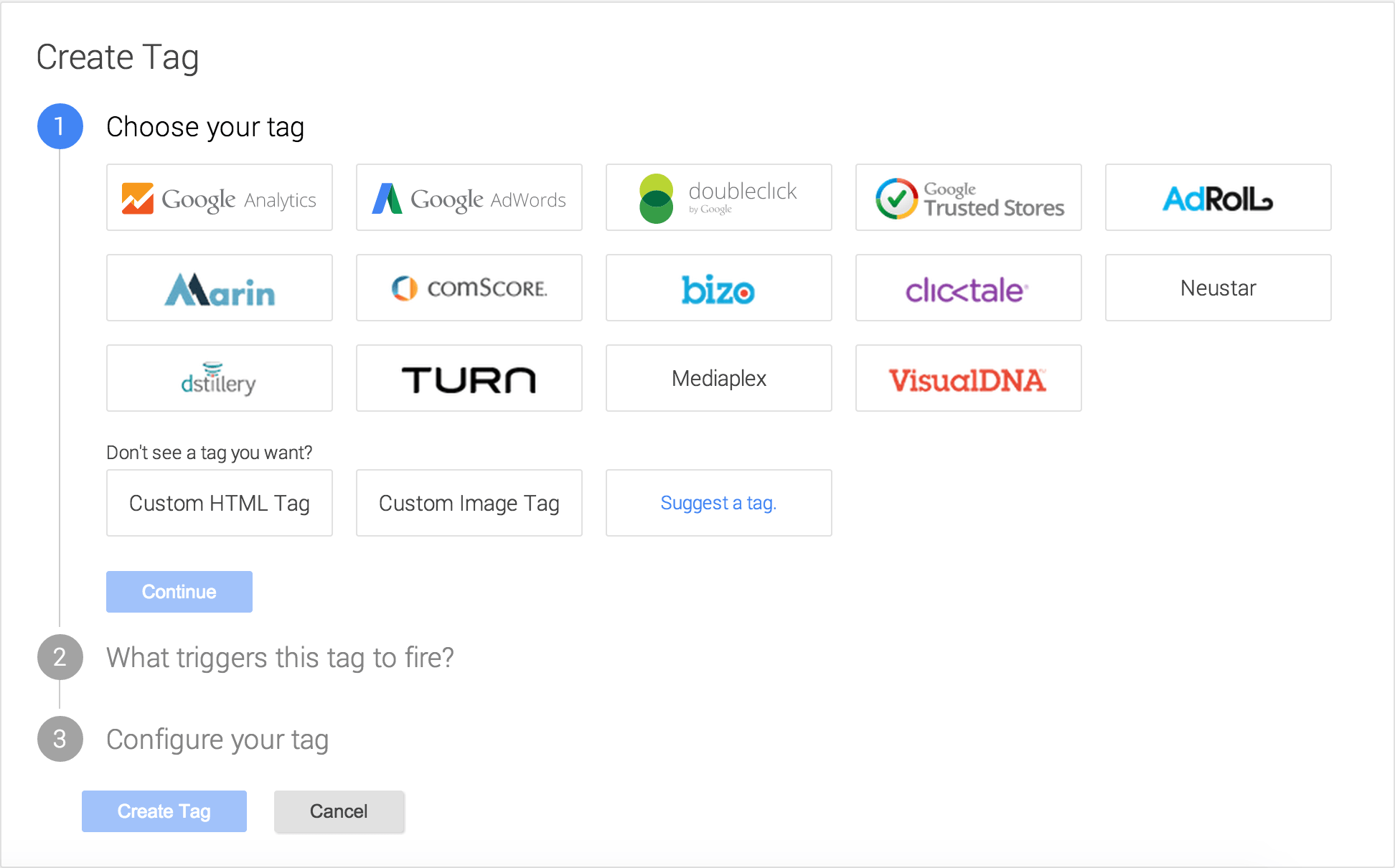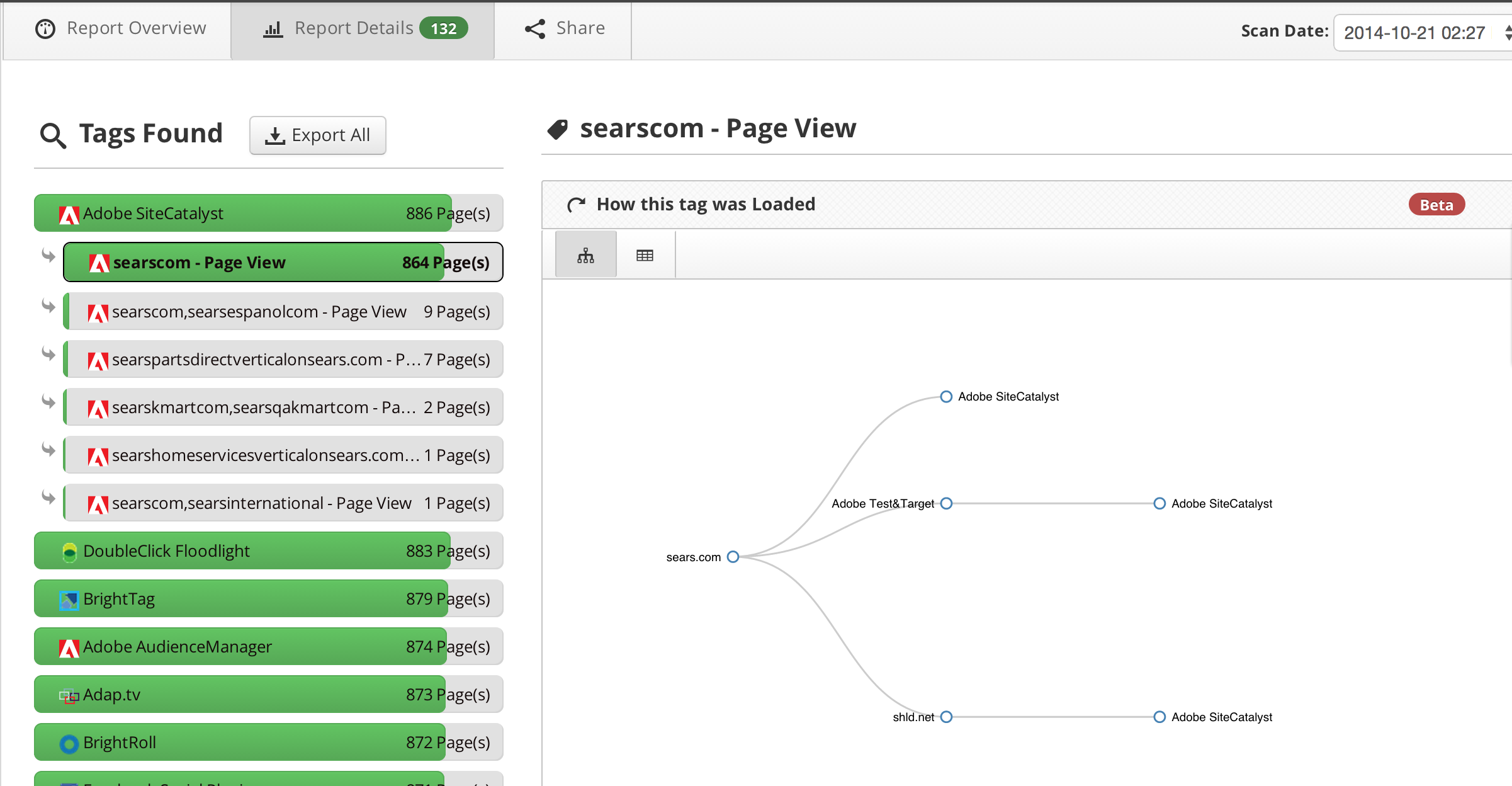Tag management has become a buzzword within the marketing community in the last few years. The rise in popularity (and shear volume) of marketing tools has led to tags becoming ubiquitous. We’ve discussed the history of tags in a previous post, but I wanted to dive in a bit deeper.
To understand what tag management is, let me first define what I mean by a tag. Typically, marketing tools like Optimizely, Google Analytics, and HubSpot (to name a few) use tags to collect information and modify website content.
What is a Tag?
A tag, sometimes referred to as a pixel or script, is a piece of JavaScript code that is placed on a website or mobile app. The JavaScript code typically executes on page load. Depending on the type of tag, they can collect information like where a visitor is coming from, what language their browser is set to, and what they did across the site. In the case of conversion tags like what AdWords or DoubleClick uses, they can record conversions based on user activity or URL visited.
Here is an example of Optimizely’s tag. Once placed on a site, it can control A/B and multivariate tests from within the interface:

What is Tag Management?
Now that you know what a tag is, defining tag management becomes much easier. Put simply, tag management is the process of managing tags across a digital environment. This environment can include websites, mobile websites and mobile apps.

Just a sample of marketing tags
Prior to tag management systems (which I’ll discuss in a minute), managing tags typically fell onto the IT or development team’s plate. The marketing team might launch a new campaign, which requires a conversion tag (or pixel) to be placed on certain pages of the site.
In this example, the marketing team would need to contact IT/development with the specific tag and its specifications. From there, the IT/development team would give marketing a timeframe for when the tag could be pushed to the live site.
Sound familiar? For many of you, this could still be an everyday occurrence for you and your team. And if you work for a larger company – or your IT/development team is sorely understaffed – it could take weeks (or months!) for your development team to add the tag to the website.
What is a Tag Management System?
A tag management system (TMS) is a tool that is used to consolidate marketing tags across a site and/or mobile app. Tag management systems allow users to control the tags firing on a site from an online interface, centralizing tag management within an organization.
The most popular tag management systems are Signal (formerly called BrightTag), Ensighten, Tealium and Google Tag Manager.

A screenshot of Google Tag Manager, a free tag management system
This is a huge advancement for marketers. It allows marketing to own tag management, which is important for a few reasons:
- The data collected by these tags is used by the marketing team. It only make sense that marketing owns the process.
- Marketing can launch new tags or remove old tags instantly without waiting on the IT/development team.
- It allows the IT/development team to focus on more important work.
Why Should You and Your Company Be Concerned?
The management of tags has become a cross-functional problem at many companies. Marketing, IT/development, finance, all of these departments can be affected by the tag management process (or lack thereof).
Marketing utilizes shiny, powerful marketing tools that need to provide a clear ROI to the executive team. Tag management – and the use of a TMS – can decrease the labor hours associated with implementing these marketing tools. They can also make tag management a much more secure process across the organization.
Think about a large organization that has many websites across many brands across many countries. The number of tags needed can reach into the 1,000’s. On top of that, each country might have different privacy rules, which influence the data a tag can collect.
A TMS allows for one central team to “own” tag management, ensuring that only approved tags get implemented in a TMS. This prevents rogue tags being placed on a site that might be violating country laws and put your company in hot water.
How Can Tag Inspector Help?
For Marketers: Chances are, you are using multiple marketing tools that utilize tags to collect information. Therefore, it’s extremely important to validate the accuracy of your data. A few reasons for inaccurate data:
- Your marketing tags are missing from certain pages on your site
- The tags are not firing correctly or are firing multiple times
- You have the wrong Account ID within your tags
For IT/Developers: Your marketing team probably comes to you at random times asking you to place tags on various pages of a site. But do you know if this tag is already present on the site? How can you ensure that once you place the tag, it is functioning correctly and it present on the correct pages?
Tag Inspector can scan your entire site to ensure the correct tags are where they need be and are functioning properly. For those using a TMS, it can see within the container to validate the tags being fired. Sign up for your free account below to scan your site NOW!

